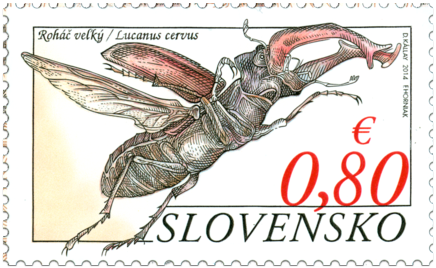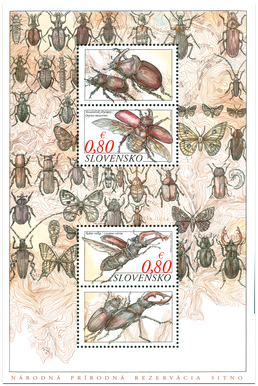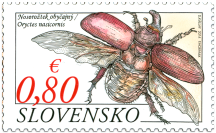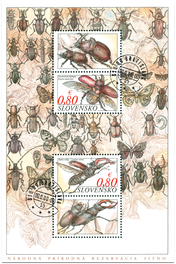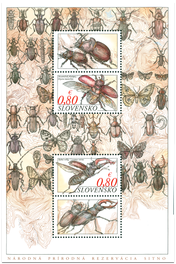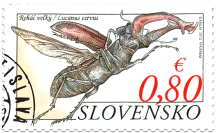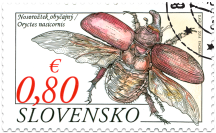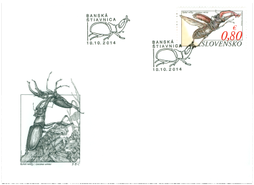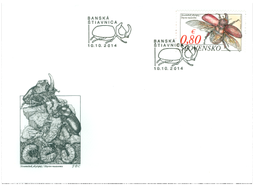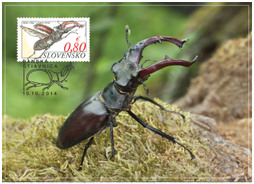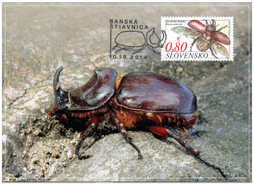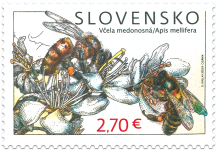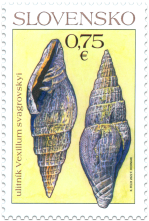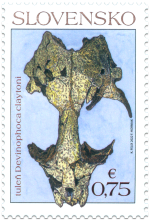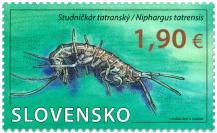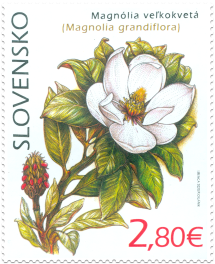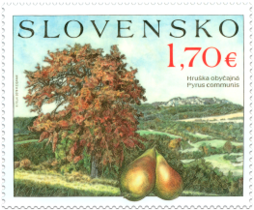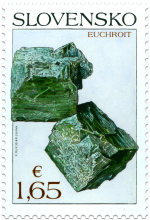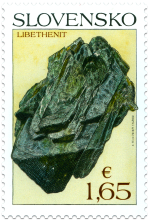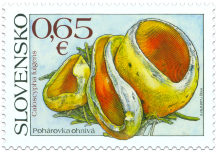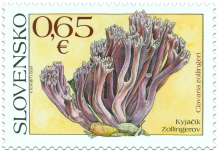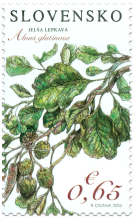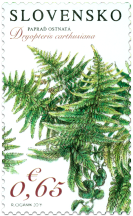This product is not for sale
This product is part of the following products
572 Date of issue
10.10.2014 Face value
0.80 €
Stag Beetle (Lucanus cervus) is our largest and most massive beetle. It is characterized by very conspicuous sexual dimorphism. Males grow up to a length of 90 mm. They have an unusually wide head and very well-developed mandibles, which constitute almost one third of the body length. The mandibles are toothed from the inside. Females have a considerably smaller head, narrower than the pronotum and shorter, less noticeable mandibles. They grow up to approximately 50 mm. Both sexes are similarly colour. The head, pronotum and legs are grey-black; the wing-cases are reddish brown. The male mandibles are also reddish brown, whereas the female mandibles are black.
Fully grown adults feed on the fermenting juices flowing out of wounded trees. They can be seen on the wing, from the end of May up to the beginning of August, in old broadleaf forests (mainly oak forests), where they mate during warm evenings. Males fight for females. Using their mandibles, they try to drive off or throw down their male rivals from a tree branch. After the mating, females lay their eggs into old decaying oaks or other broadleaf trees. Larvae emerge from the fertilized eggs. They feed on decaying wood. Their development can take up to three to five years. The larvae are large, c-shaped and creamy-white with short orange legs. The sharp, hardened, dark mandibles on their yellowish-brown head enable them to tear through fibrous wood. They grow up to 100 mm. When they grow up, the larvae build a cocoon from dirt and touchwood in the soil near the tree and pupate within it. The fully grown stag beetle emerges from the cocoon in autumn of the same year. It spends winter in the cocoon and emerges from the soil in spring of the following year. The adult lives only for a few weeks.
The Stag Beetle is recorded throughout the Western Palearctic, where three different subspecies can be found. A nominotypical form, which occurs throughout Europe (except the northern part), lives in Slovakia. Large amounts of it can be found in in oak forests of Southern and Eastern Slovakia, however, it is rare in the northern parts. It represents one of the endangered species, mainly because of the old oak groves deforestation and removal of wounded trees, which are ideal for development of the larvae. Their main natural enemies are woodpeckers. The Stag Beetle is classified into protected species of national significance and its social value was set at EUR 230.
Ľubomír Vidlička
© 2024 POFIS - Postal philatelic service. All rights reserved

